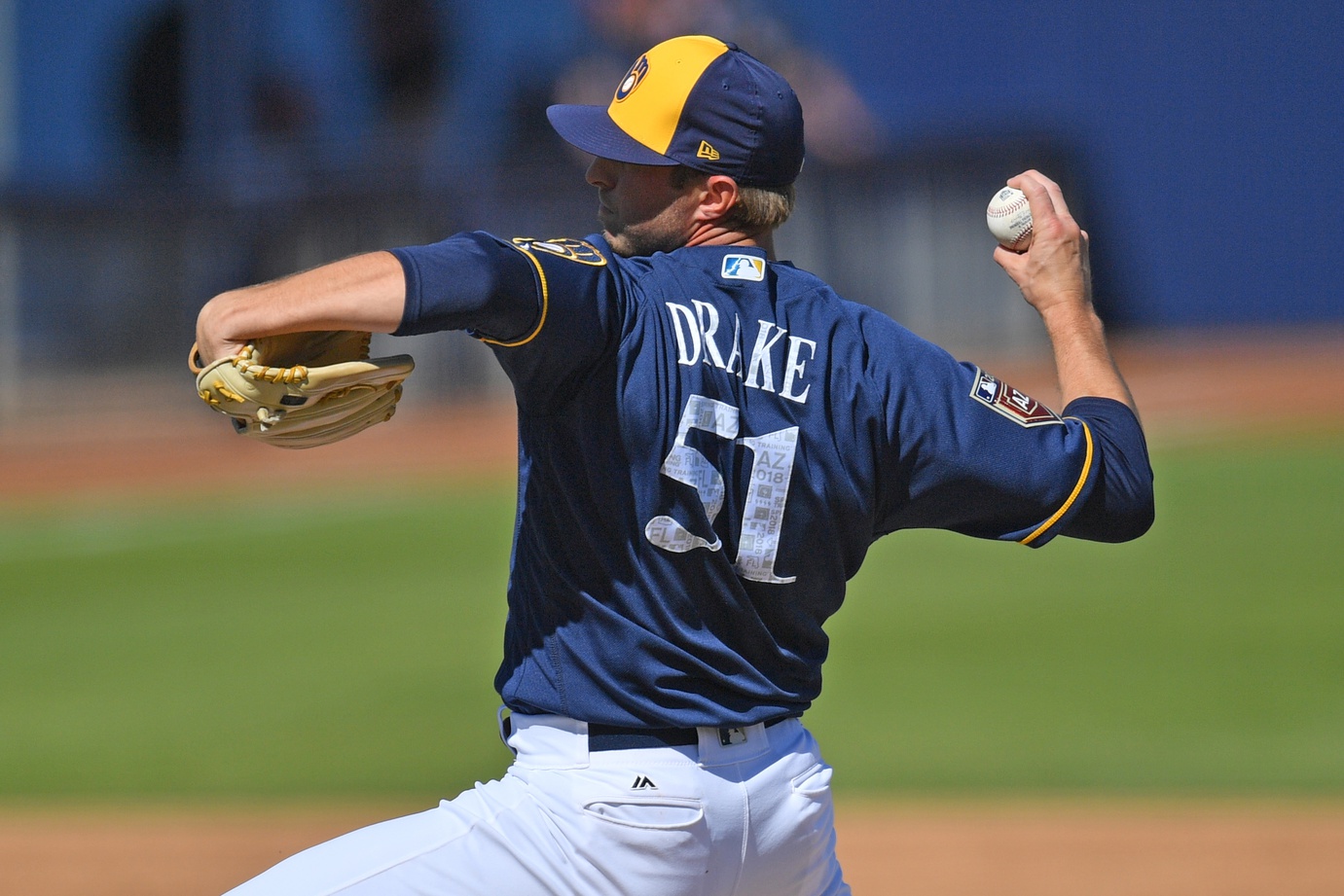On Monday night, the Brewers suffered a particularly rough loss to the Reds. Brent Suter did what he does best, working five innings while allowing 3 runs, and the offense did what they do best, which currently means they had yet to score any runs by the time Suter left. Enter Oliver Drake, an average middle reliever who somehow faces extreme scorn from Brewers fans, he of the 8 IP / 5 H / 1 R / 10 K – 7 BB – 0 HR line entering Monday night’s contest. The high-over-the-top righty has mostly worked in the sixth and seventh innings in 2018, and Monday night’s situation was seemingly harmless: soak up some innings for a team whose offense currently struggles to make 3 runs allowed a competitive situation.
#Brewers pic.twitter.com/OuDHl9DHBv
— Mike Bischoff (@mpbMKE) April 14, 2018
GM David Stearns acquired Oliver Drake without fanfare on April 14, 2017, in a cash transaction with the Baltimore Orioles. The deal essentially completed the Damien Magnifico designation for assignment, as Magnifico was traded to the Orioles for future considerations on April 13, 2017. Drake served as a reverse-Left Handed specialist for the Milwaukee bullpen, as the righty’s splitter-oriented approach allowed him to neutralize lefty bats in the middle of the game. The righty was essentially average in terms of runs prevented for the Brewers, and his 4.64 DRA and 98.8 DRA- both support that fact. One of the benefits of having an average reliever in this role is that Drake is cost-controlled and under club reserve until 2022; despite having worked in the MLB since 2015, Drake’s MLB roster time has been minimal enough to delay arbitration until the 2020 season (according to Cot’s Contracts).
Of course, after Stearns’s acquisition of Junior Guerra, or his waiver wire flirtation with Blake Parker and Steve Geltz, Brewers fans should suspect that Oliver Drake is viewed as more than an “average middle reliever” for the Milwaukee bullpen. In this aspect, Drake is a classic “Stearns” pitcher in multiple ways: he crosses the “Junior Guerra” requirement with a solid split finger fastballs, and he crosses the “Chase Anderson” requirement with a funky, big over-the-top delivery (in fact, Drake’s delivery is so Stearnsian that in future years, analysts will be comparing other Stearns acquisitions to Drake). Finally, Drake also serves a huge function for what is emerging as a great bullpen (through 2017 and now 2018, as well): he’s a quiet break-out candidate that has the luxury of working in the middle innings where no one will notice. In a bullpen full of closers, he’s a potential situational ace-in-waiting, if just a few more things go right.
On Monday night, the problem with Drake against the Reds was that the splitter simply was not working. Reds batters did not miss the pitch, instead slamming a single and two doubles off of what should be Drake’s retirement pitch. But, entering Monday, witness the arsenal shift for Drake. According to Brooks Baseball, here’s Drake in 2017:
Not only has the righty swapped his slider for a slower curveball, but he also has decreased the usage of his splitter:
It’s too early to tell with any certainty, but Drake has also changed his fastball, arguably spinning the pitch to work more as a true hard-rising pitch in 2018 than the offering with slightly more arm-side run in 2017. This shift is arguably very similar to Jacob Barnes’s fastball, which makes one wonder what type of alchemy the Brewers front office, Derek Johnson, and the bullpen crew have going on with their pitch selection work.
While Drake’s pitching line exhibited strike zone command issues (in terms of walks allowed), the righty’s new pitch mix was a wonder for yielding whiffs and groundballs entering Monday. Here’s how Drake worked in 2017:
Now, his new arrangement of pitches produces the following results:
Perhaps the new spinning fastball explains Drake’s command issues somewhat, and it will be worth watching what the righty does with the pitch from here out. But the curve and split are combining to produce more groundballs than his old slider-splitter arsenal, and the splitter is also yielding more whiffs under this current workload. Thus, the walks need to improve for Drake, but on the periphery, the righty reliever is suddenly working more groundballs and strike outs out of his approach.
There are many reasons to cheer for Oliver Drake. At best, fans ought not to treat him with scorn, as his roster spot is certainly deserved based on his 2017 performance, as well as for speculative reasons based on his arsenal adjustment and pitching profile for 2018. Drake is a David Stearns arm, and his pitching profile almost perfectly exemplifies what the Brewers are trying to do with their “pitching system.” In a league where teams are lauded by fans for acquiring low-risk, low-cost pitchers and transforming their roles within a specific analytic system, Oliver Drake should become a Brewers fan favorite: this is what a systemic arm looks like for the new, pitching-focused Brewers.
Photo Credit: Joe Camporeale, USA Today Sports Images





I like your analysis but what role do you see him playing when/if Boone Logan returns?